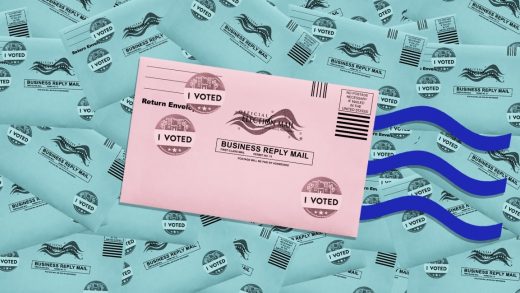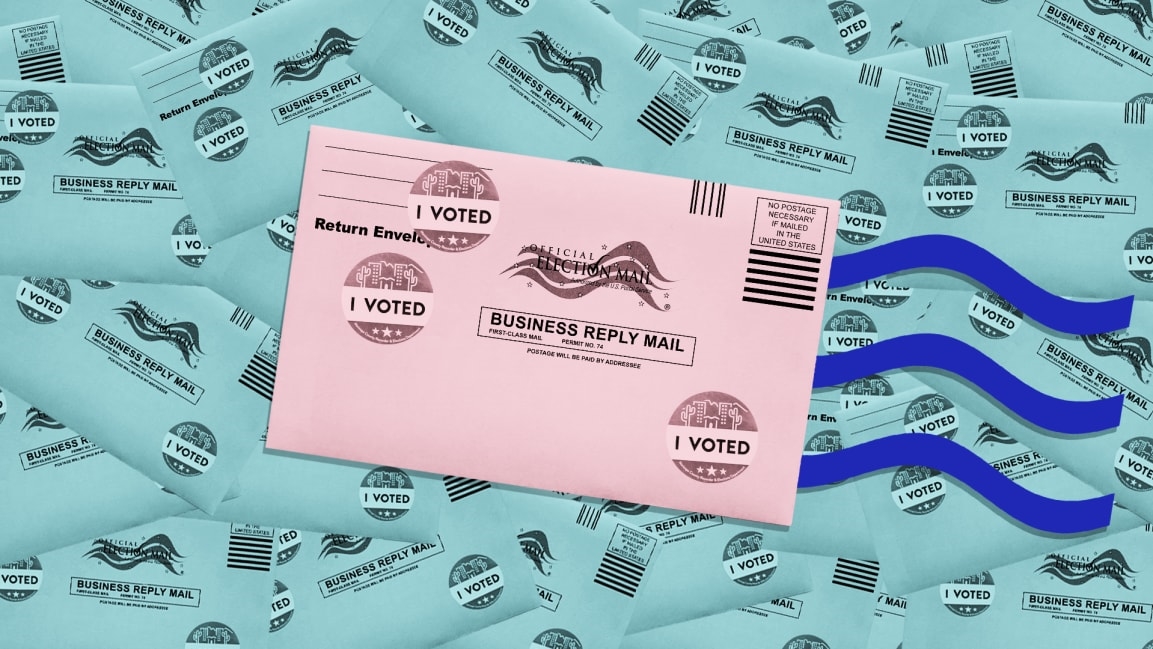States are getting creative to prepare for the pandemic election
For all the things that seem to be threatening the integrity of the November 3rd election, states have also done a lot of very constructive things to ensure that things go off fairly and safely, election experts say.
Over the past six months, the media and the public have become increasingly concerned about the doomsday scenario where the election is close and Donald Trump uses that—along with the doubts he’s sewn about the sanctity of mail-in ballots—as a pretext to contest the election and potentially refuse to leave the Oval Office.
No election official in any Red or Blue state can stop the flow of propaganda, but many have worked hard, and creatively, to prepare for this year’s contest, say three election experts who spoke on a panel at Fast Company‘s (virtual) Innovation Festival on Tuesday.
Because of the coronavirus, many states will see as many as 10 times the number of mail-in ballots as they did in the last presidential election in 2016. And states have received little help from the federal government to prepare.
“Congress really failed in terms of providing the appropriate funding early on this year that would have enabled states to plan and prepare and execute for the massive changes they’re facing right now,” said Amber McReynolds, CEO of the National Vote at Home Institute.
Setting up vote by mail during a cash crunch
U.S. elections are administered largely by states and counties, while the federal government plays an advisory and supervisory role through agencies like the Department of Homeland Services and the Federal Elections Commission. In 2020, however, the federal government has been less forthcoming with money to help states through a challenging election. Several bills were introduced in Congress to provide states more funding, only to be repeatedly blocked by Senate leadership. Congress finally allocated $400 million as part of the CARES Act in March, far short of what Democratic lawmakers had asked for.
Despite that, McReynolds said, some lawmakers and many election officials at the state level have worked hard with limited resources to retrofit election processes for the demands of a high-turnout election held in the midst of a pandemic. Even Georgia, which has been the poster child for voter purges and suspect election administration, has taken some meaningful steps in 2020.
“Georgia not only stood up and built an online absentee application process,” McReynolds said, “They’ve also now announced a full statewide ballot tracking system.” In addition, the state has expanded the number of days that election officials at the local level have to process ballots.
McReynolds also called out California for having quickly put in place education and awareness programs for people who may be voting by mail for the first time in 2020. California also rolled out a new mail-in ballot tracking system where voters can track the status of their mail-in ballots via the internet.
Ten states that normally require people to provide an excuse for requesting an absentee ballot loosened these eligibility requirements for 2020. Some, like Missouri, now allow voters to use a positive COVID-19 test as an excuse for absentee voting. Others, like Massachusetts, have dropped the excuse requirement entirely.
Some states have far more experience with handling mail-in ballots than others. Washington, for example, has for many years sent out mail-in ballots to all registered voters (Colorado, Hawaii, Oregon, and Utah also do this). That means the systems and processes for distributing, verifying, and securing are in place and battle-tested.
Mature systems like Washington’s are able to maintain integrity, but also take extra steps to allow people to exercise their right to vote. For instance, one of the big reasons that mail-in ballots get rejected is that the signature on the ballot sleeve doesn’t appear to match the signature election officials have on file (it often comes from the DMV). “If the signature matches, it goes on through processing,” said Kim Wyman, Washington’s secretary of state and top election official. “If it doesn’t match, we reach out to the voter and we give them a second chance to either sign their ballot.”
Many jurisdictions do not do that kind of follow-up. The onus is often left on the voter to find out if their ballot was accepted (usually by calling the county clerk’s office or elections board), and to hustle to remedy the situation (either by requesting another mail-in ballot or voting in person). It’s true that 39 states (see NBC’s interactive map) offer some means of checking on one’s ballot status, but many of these systems don’t track the ballot at all points along the round trip from elections office to voter and back. Privately developed software like Ballot Scout and BallotTrax do a better job of that.
But even states like Washington that have processed mailed in ballots for years could face unique challenges this year, said Decision Desk HQ president Drew McCoy.
“They may have some challenges simply because of the scope and the scale of absentee balloting or early in person balloting,” he says. Still, McCoy expects states with more experience to handle the challenge well. It’s states that have enacted new laws allowing more people to vote by mail that he’s worried about.
“There are obviously concerns around states that are trying to do this now,” McCoy said. “Trying to create this kind of process in six months, is an unbelievable challenge.”
The challenges of in-person voting
While much of the concern about voting integrity this year has focused on mail-in ballots, election officials have also been working hard to prepare for a very different in-person voting experience on November 3rd.
One huge problem this year is a shortage of poll workers. That was the reason Milwaukee’s 180 polling stations were narrowed down to just five during the primary last spring, causing huge lines in cold weather during a pandemic.
In 2016 the average age of these workers was 70, the exact demographic that’s at risk for COVID-19. The Milwaukee debacle set election officials in motion trying to line up poll workers. Wyman said groups such as Business for America and the American Bar Association have also been on the ground this year advertising the need for poll workers. “[They’ve been] really trying to get their people to mobilize and support states, and I think we’re seeing that outpouring hitting states and we’re seeing a really great response,” she said. “So I think we’re all working very hard to fill those spots and now [the effort] is really in critical need areas and we’re still looking for people.”
McReynolds said that election officials across the country have also been thinking of ways to ensure the safety of people who decide to vote in person. She says she’s seen a lot of emphasis on providing the right PPE to both voters and poll workers. When people go to the polls this year, they’ll likely see a lot of plexiglass panels between voters and poll workers. They’ll see a big effort to guide and enforce social distancing. Officials have also been seeking out larger voting locations to make social distancing easier, McReynolds says.
“The innovation we’re seeing coming from local election officials in our state is just extraordinary,” Wyman said. “We’re seeing innovations like drive-up curbside [ballot] pickup, and I know some states that have banned [them] but we had great success with it in our primary election and I know many of our counties are expanding it for the general.”
“We’re doing some points of assistance where partnerships between county officials and their local libraries are happening,” Wyman said. The libraries can help voters who don’t own printers download, fill out, or print registration, ballot request forms, or ballots.
Even if everyone on the playing field this year was working in earnest to welcome everyone into the democratic process, administering this year’s election would still be a big challenge. But not everyone is. A big part of the GOP game plan for winning is to actively reducing the number of people who vote. The most recent case in point came when Texas governor Greg Abbott pushed out a proclamation last week limiting each county in Texas to one absentee ballot drop-off box. After Donald Trump raised doubts about the ability of the Post Office to return mail-in ballots in time to be counted, many voters’ Plan B was to use the drop-off boxes to return their ballots.
Harris County is bigger than the state of Rhode Island, and we’re supposed to have 1 site? This isn’t security, it’s suppression. Mail ballot voters shouldn’t have to drive 30 miles to drop off their ballot, or rely on a mail system that’s facing cutbacks. https://t.co/IeKwzdB0Hb
— Lina Hidalgo (@LinaHidalgoTX) October 1, 2020
Many such voter suppression skirmishes will play out in courtrooms across the U.S. in the coming weeks. And after the lawsuits about voting methods are over, it’ll likely be time for scores of new lawsuits about the fairness with which the votes are counted. In the meantime, both the leadership of the country, and the country’s future direction, will hang in the balance.
(11)



